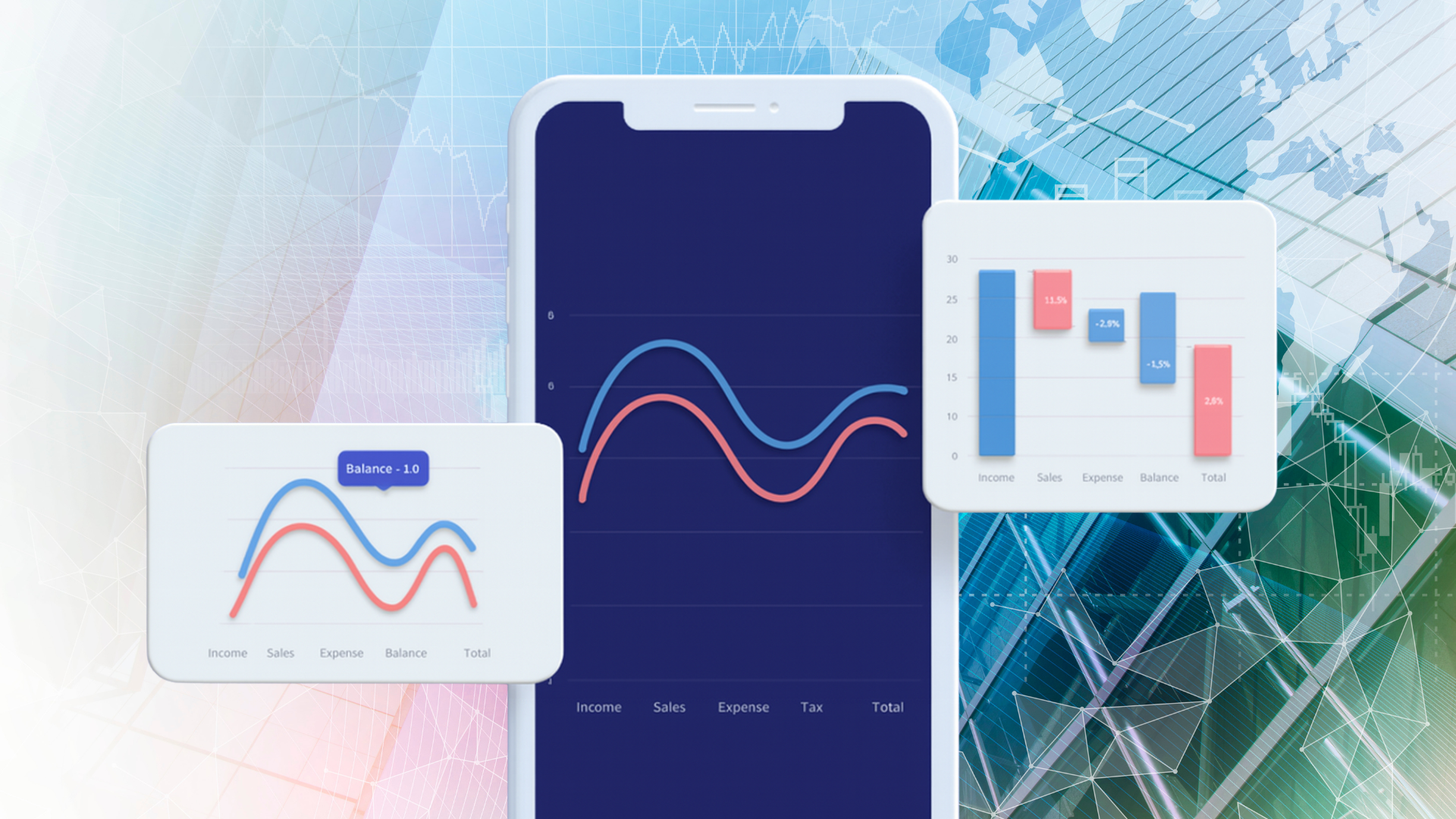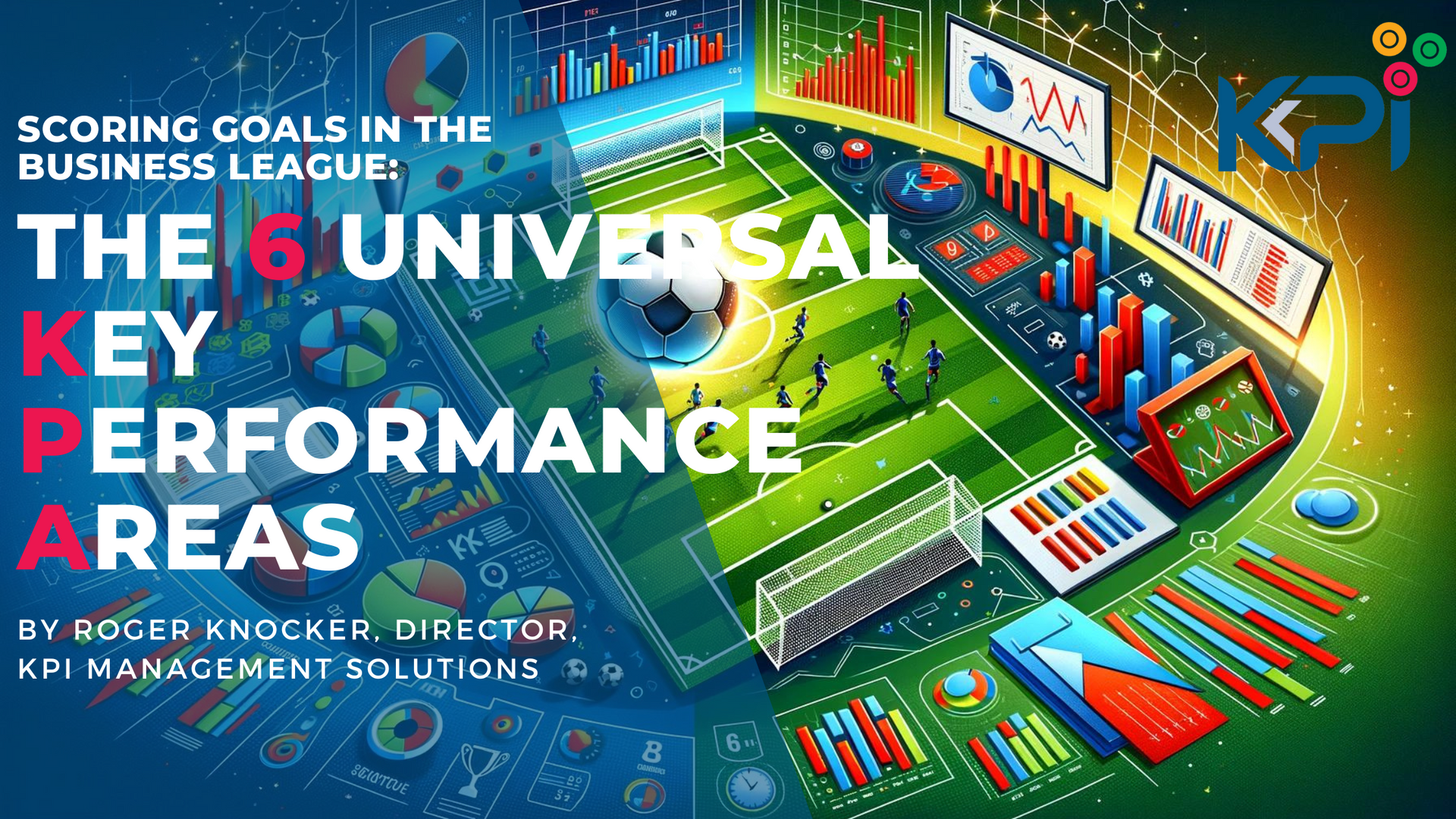Your FP&Ai Insight Hub
Financial Reporting and Analysis Insights
Categories

When did finance become the department of “no”? “No, we can’t spend that.” “No, that’s not in the budget.” “No, that’s not how we do it.” Here’s the truth: If finance is just a gatekeeper, it’s failing the business. Finance Isn’t Just About Numbers Andrew Brown put it bluntly on the FP&AI Podcast: “Finance should be leading conversations about the future, not just reporting the past.” Think about it— What’s the point of a month-end pack that no one reads? What’s the point of perfectly reconciled accounts if they don’t change the way decisions are made? Finance isn’t just about accuracy. It’s about impact . The Business Partner Mindset T he best finance professionals think like entrepreneurs. They ask: Where are we really making money? What assumptions are broken? How do we change the levers to hit our goals? They don’t just report results. They interpret them. They walk into the room with a story, a strategy, and a plan. What Johan Taught Us Remember Johan, the volunteer deacon who turned financial updates into action? He wasn’t trying to impress anyone with accounting jargon. He used a worm chart and a waterfall chart to tell a simple story: Are we on track with donations? If not, where are we falling behind—and why? It worked because it made the future clear. That’s what business partnering looks like. The Shift Every Finance Team Must Make B ookkeepers report. Business partners lead. The shift is subtle but powerful: From data-dumping to decision-driving. From hiding behind compliance to leading with insight. From “here are the numbers” to “here’s what they mean—and what to do next.” Your Move So, is your finance team stuck in bookkeeping mode? Or are you stepping up as a commercial conscience— the team that sees ahead and helps the business win? The mindset shift starts here: Stop asking “What happened?” Start asking “What’s next?” ________________________________________ This article is inspired by my conversation with Andrew Brown on the FP&AI Podcast – Episode 1: Finance as a True Business Partner – Beyond the Numbers.

Finance updates are supposed to guide decisions. So why do most of them feel like punishment? Black-and-white statements. Tables of variances. Forty pages of data that leave everyone bored and none the wiser. Then there’s Johan. A Volunteer Who Changed the Game Johan wasn’t a corporate CFO. He was a volunteer deacon , leading the finance committee at his church. No big team. No flashy tools. Just a conviction that numbers should make sense —and inspire action. When the church needed to raise funds to hit its objectives, Johan knew the standard “actual vs target” report wouldn’t cut it. So, he built two charts that changed everything: 1. The Worm Chart The worm chart tracked donations against budget— the budget the church had calculated to achieve its goals. Whenever donations dipped, Johan simply put the worm chart on the screen. No guilt trips. No lengthy explanations. And bam—donations came in. People didn’t need persuasion. They just needed to see the gap and understand the story behind it. 2. The Waterfall Chart AGMs used to be tedious marathons of financial statements— page after page of black-and-white tables no one wanted to read. Johan cut through that noise. His waterfall chart, explained in just a few minutes, was 90% of what people needed to understand the finances. It showed how actual finances tracked to budget— positive variances, negative variances, the size of every gap— all on one clean, visual chart. Suddenly, finance wasn’t boring. It was clear. It mattered. The Real Lesson Here’s the kicker: Johan used the same Excel everyone else had. It wasn’t about the tool. It was clarity and creative thinking that won the day. Finance doesn’t need more complex reporting. It needs leaders who can tell the story behind the numbers. The Challenge to Finance Teams Would your reports spark action? Would they make the story obvious—so obvious that people couldn’t help but respond? If not, maybe it’s time to simplify. Find your worm chart. Build your waterfall. Make the numbers impossible to ignore. This article is inspired by my conversation with Andrew Brown on the FP&AI Podcast – Episode 1: Finance as a True Business Partner – Beyond the Numbers.

I’ve built an activity-based costing system. For my own group of companies. It works. The logic works. The reports work. The numbers run beautifully. Except for one thing. The data. The master data isn’t quite right. Not wrong. Just... inconsistent. So we start investigating. We doubt the results. We trace back through layers of transactions to find the flaw. Hours go by. Not because the tool is broken. Because the foundations were never right in the first place. And here’s the bigger problem. The real problem. Our trial balance and our financial statements? They don’t reflect the real business. At all. Even though we’ve done everything right. Dedicated finance team? Check. Excellent outsourced accountants? Check. Senior chartered accountants with carte blanche to "sort it all out"? Check, check, and check. We have clean audits. We're compliant. We tick every box. And yet... The insights we get? High-level. Irrelevant. They don’t help our managers. They don’t help our pricing. They don’t help us decide what to stop doing. Meanwhile, finance is pushing debits and credits into the general ledger at a furious pace. If they were paid per journal, they’d all be millionaires by now. And when those journals land? We look at the information. And it helps us squat. Nothing. No insights. Just questions. No answers. No decisions. Just a few more tasks to investigate what’s going on. Are the entries complete? Are they valid? Are they even useful to anyone outside of finance? Because here’s the truth most people won’t say out loud: Finance doesn’t understand the business. They process hundreds of journals efficiently. Fast. Neat. Organised. But the entries are wrong. Allocated to the wrong products. The wrong services. The wrong lines of business. Calculated on the wrong ratios. Based on assumptions that no one in operations would agree with. So when decisions are made? They’re based on fiction. Or worse - on “efficiently processed” fiction. And nobody sees it. Except business. They feel it. They just don’t have the time to audit finance’s work. Why should they? Isn’t that what we pay Finance to do? Because financial systems are built for someone else. For SARS. For the taxman. For the auditor. Not for the operator. Not for the person running the business. Not for the one asking, "Where are we actually making money?" And here’s the part that really gets me. We are master data junkies. We pride ourselves in clean, structured, standardised data. We obsess over naming conventions, hierarchies, mappings. So if we're struggling? What about the companies who don’t care? Who hire people who don’t care? Who don’t even know what master data means? What chance do they have? As a qualified accountant, I deeply want the financials to be right and adding value - all at the same time. I tell everyone I’m an accountant. I love playing for the winning team. Who doesn’t? I want our sweat to generate the numbers and tick all the boxes (I’m all for that). But at exactly the same time, I want them to add business value. Win/win. Finance and Business, joined at the hip. Partners. Winning together. Who wouldn’t want that? So we end up with financials that are easy to print. Easy to submit. Easy to tick off. But useless to run a business. What would it look like... ...if we rebuilt financial systems from scratch? Not for compliance. But for clarity? That’s what I’m working on. And it’s harder than it sounds. But it’s possible. And it’s necessary.

In the world of finance, numbers tell a story. However, that story is often buried beneath layers of spreadsheets and complex datasets. For financial professionals, the challenge is not just about understanding these numbers but also presenting them in a way that drives decision-making and inspires action. Enter data visualisation – the art of transforming data into clear, compelling visuals. Among the tools that have proven especially powerful are the line graph and the waterfall chart. These visuals help finance teams translate dry statistics into impactful narratives. In this article, we explore how these graphs can transform financial storytelling. The Importance of Data Visualisation in Finance Finance professionals are accustomed to handling vast amounts of data, from profit margins and revenue growth to expense tracking and risk assessments. Yet, presenting these figures effectively to stakeholders is a different ballgame. Visualisation simplifies this process, turning complex data sets into accessible insights. When done correctly, data visualisation: Enhances comprehension: Humans process visuals 60,000 times faster than text, making it easier for stakeholders to grasp key information quickly. Drives decision-making: Clear and compelling visuals help executives make informed decisions without wading through dense reports. Highlights trends and outliers: Visual tools can bring hidden trends and anomalies to light, prompting timely actions. Improves understanding and communication with business - Business doesn't always get what Finance is trying to communicate and good visualisations go a long way to bridging the gap. Better communication improves alignment to strategic financial goals. The line Graph: Unravelling Trends Over Time The line graph, also known as a stream graph or a stacked area graph, is a powerful tool for visualising changes in data over time. It is especially effective in showing how multiple categories contribute to an overall trend. In finance, line graphs can illustrate revenue streams, expense categories, or investment performance in a visually engaging manner. Use Case: Revenue Streams Analysis Imagine a financial report for a company with diverse revenue streams, such as product sales, services, and subscriptions. A line graph can display how each stream has evolved, highlighting peaks and troughs. The thickness of each ‘line’ represents the contribution of that revenue stream to the total, making it easy to spot which areas drive growth. Benefits of line Graphs: Trends Made Simple: Displays how multiple components evolve over time. Visual Impact: The fluid, organic design makes it easier to follow changes. Comparative Insight: Helps compare different categories intuitively. The Waterfall Chart: Bridging the Gap Between Figures Waterfall charts excel at breaking down the cumulative effect of sequential data points, making them ideal for financial analysis. They help bridge the gap between figures by showing how individual elements contribute to a total. Commonly used in profit and loss statements, budget analysis, and variance reports, these charts provide clarity in understanding how specific actions impact the bottom line. Use Case: Profit and Loss Analysis A financial analyst preparing a quarterly report might use a waterfall chart to demonstrate how various factors—like increased sales, higher marketing spend, and cost savings—impacted net profit. The chart’s structure, with its clear progression from starting figures to the final result, makes it easy for stakeholders to follow the financial narrative. Benefits of Waterfall Charts: Clarity: Simplifies complex financial data by showing individual contributions to total figures. Transparency: Clearly distinguishes between positive and negative impacts. Decision Support: Helps executives understand the key drivers of financial performance. Choosing the Right Visual for the Right Data Selecting the appropriate visual tool depends on the story you want to tell: Use line graphs for illustrating trends across multiple categories over time. Opt for waterfall charts when you need to detail the step-by-step impact of specific factors on an overall financial figure. By mastering these tools, finance professionals can enhance their storytelling, transforming raw data into insights that drive strategic decisions. Conclusion: From Data to Decisions The ability to visualise data effectively is a powerful advantage. The line graph and waterfall chart are more than just visual aids—they are essential tools for financial professionals looking to make data-driven decisions that resonate with stakeholders. By adopting these techniques, finance teams can turn numbers into narratives that not only inform but also inspire action. In the end, the power of finance lies not just in analysing data but in presenting it with impact.

In a recent webinar, Roger Knocker, CEO of KPI Management Solutions, shared invaluable insights on extracting meaningful analysis from any data set. These strategies, honed over years of practical experience, are universally applicable—whether you're working with financial data, fitness statistics, or sales figures. Supported by research and best practices, here’s a breakdown of the 10 tips Roger presented to enhance your data analysis skills :

I was invited by a CFO forum to speak about Key Performance Indicators (KPIs). The problem they identified was: “It’s too complex! There are so many KPIs to choose from. There are Quality, Productivity (Quantity), Efficiency, and Timeliness KPIs. We have to deal with Risk and Capability metrics. There are leading and lagging KPIs, and people often confuse them. Plus, there are Financial and Non-Financial KPIs, and Strategic versus Operational KPIs.” They asked me to simplify this for them and suggest no more than 5 KPIs that would help any business, department, or team to: Grow the business Increase efficiency, profitability, and cash flow Build sustainability They also asked me to solve world hunger while I was at it, and if that wasn't possible, at least boil the ocean. I was relieved when they conceded and removed Antarctica from the scope. I thought of some principles that would guide me to the right KPIs and came up with this acronym to make it QUICK: Quantifiable - No subjectivity, only data-driven. Uncomplicated - Simple to gather the data needed. Intuitive (for Practical) - Easy for people to understand in any business and any team. Customizable (for Agile) - Ability for the measurement to be adjusted slightly for the specific situation. KPIs - Key Performance Indicators. After a few agonizing weeks of racking my brain to find just 5 KPIs, I finally gave up. I phoned the chairman of the forum and said, “I can’t narrow it down to just 5 KPIs, but I can get it down to 6. Am I still invited?”

For more insight, listen to our podcast.
At FP&Ai, we believe finance is more than numbers, it’s about insight.


